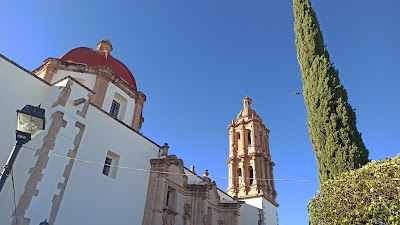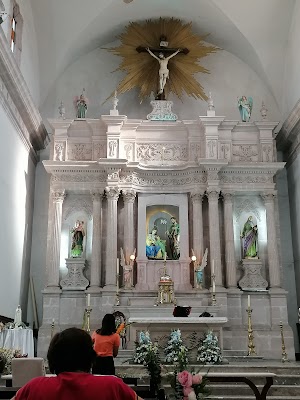Templo de Santa Ana (Templo de Santa Ana)
Overview
The Templo de Santa Ana is one of Durango, Mexico's most cherished historical and architectural treasures. Nestled in the heart of the city, this magnificent church serves as a beacon of religious devotion and colonial heritage, offering an enriching experience for all who visit.
Construction of the Templo de Santa Ana began in the late 16th century and was completed in the early 17th century, making it one of Durango's oldest religious structures. This church holds significant historical importance as one of the earliest foundations laid by Spanish settlers, reflecting the spread of Christianity in the New World and the intertwined cultural narratives of Mexico’s colonial past.
The Templo de Santa Ana is a stunning example of baroque architecture, characterized by its intricate façade and detailed stone carvings. The exterior is adorned with statues of saints and religious iconography, masterfully sculpted to convey profound spiritual themes and narratives. As you approach the church, the towering bell towers and magnificent entryway captivate visitors, showcasing the exceptional craftsmanship of the era.
Inside, the church is equally breathtaking. The spacious nave is illuminated by natural light streaming through elaborately designed stained glass windows, which not only enhance the sacred ambiance but also depict various biblical scenes and saints, deepening the spiritual atmosphere of the sanctuary. The high altar, richly adorned with gold leaf and classical religious artwork, offers a glimpse into the opulence of colonial-era religious artistry.
Historically, the Templo de Santa Ana has played a vital role in the community, serving as a site for numerous significant religious ceremonies, including baptisms, weddings, and funerals. This church has anchored the social and spiritual lives of many Durango residents over the centuries and has also been a center for various cultural activities, fostering a sense of community and continuity through generations.
One particularly interesting aspect of the Templo de Santa Ana is its unique chime system. The bells, cast centuries ago, produce distinctive tones that resonate throughout Durango's historic district, marking the passage of time and calling the faithful to worship. These enchanting chimes are a charming facet of the church's heritage, preserving a tradition that has endured since colonial times.
The church has withstood the test of time and numerous natural calamities, thanks to its robust construction. Its ability to survive earthquakes and other environmental challenges is a testament to the durability of colonial architectural techniques. Restoration efforts over the years have maintained its structural integrity and aesthetic splendor, ensuring that future generations can continue to marvel at its beauty.
Visiting the Templo de Santa Ana offers more than just a glimpse into the past; it provides a moment of reflection and appreciation for the artistry and dedication of those who came before us. The peaceful courtyard, often filled with the scent of blooming flowers, serves as a tranquil escape from the bustling city outside. This serene environment encourages contemplation and offers a perfect spot for introspective moments or quiet conversations.
For foreign tourists, exploring the Templo de Santa Ana is both an inspirational and educational journey. Guided tours are available, providing detailed insights into the church's history, architecture, and the significant role it has played in Durango's development. These tours are often led by knowledgeable locals who share intriguing anecdotes and lesser-known facts, enhancing the overall experience.
In conclusion, the Templo de Santa Ana is not merely a religious site; it is a historical monument and a cultural beacon that stands as a testament to Durango's rich heritage. Whether you are a history enthusiast, an architecture lover, or simply someone seeking a peaceful retreat, the Templo de Santa Ana promises a visit that will linger in your memory long after you have left its sacred grounds.







